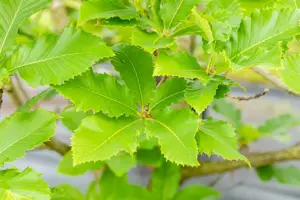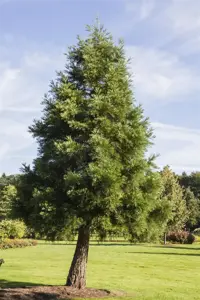Syringa prestioniae 'Nocturne' - SOLITAIR 150-175 CM C25
Syringa prestioniae 'Nocturne' - SOLITAIR 150-175 CM C25
Synonym
Synonyms (botanical): Syringa x villosae.
Bulletpoints
* suitable for flowering hedges
* the flowers are highly favoured by bees, bumblebees and hoverflies
* cut flower
* strongly scented flowers
* attractive yellow autumn colouring
* easy to care for
* resistant to urban climates and deer
Leaves
Attractive yellow autumn colouring.
Growth habit
Lilac 'Nocturne' is bushy, upright and dense in habit. Fast growing.
Water
The plant has a medium water requirement.
Location
Preferred location in a sunny position.
Soil
Normal soil.
Planting time
Container plants can be planted all year round, except when the soil is frozen and in summer heat (over 30°C).
Tasks
- Apply compost: In the period from November to December.
Care
- A slow-release fertiliser can be used in spring. This releases the nutrients slowly and continuously so that the plant is evenly supplied over a longer period of time.
- Watering less frequently, but thoroughly and thoroughly, encourages the plant roots to penetrate deeper into the soil. This helps the plant to survive periods of drought.
- Lilacs flower on biennial wood, so the plant should be thinned out after flowering or plants that have grown too large should be pruned.
- This plant does not tolerate heavy soil. If necessary, the soil structure can be improved when planting by working in sand and mature compost.
Flower
The dark pink flowers appear in panicles from the end of May to June. They are strongly scented.
Use
Cut, solitary, group planting, bee pasture, hedge
- Article number7
-
EAN codeSYPNOCTU-SO150175C25
- Latin nameSyringa prestioniae 'Nocturne'
- catalogLandscape shop



